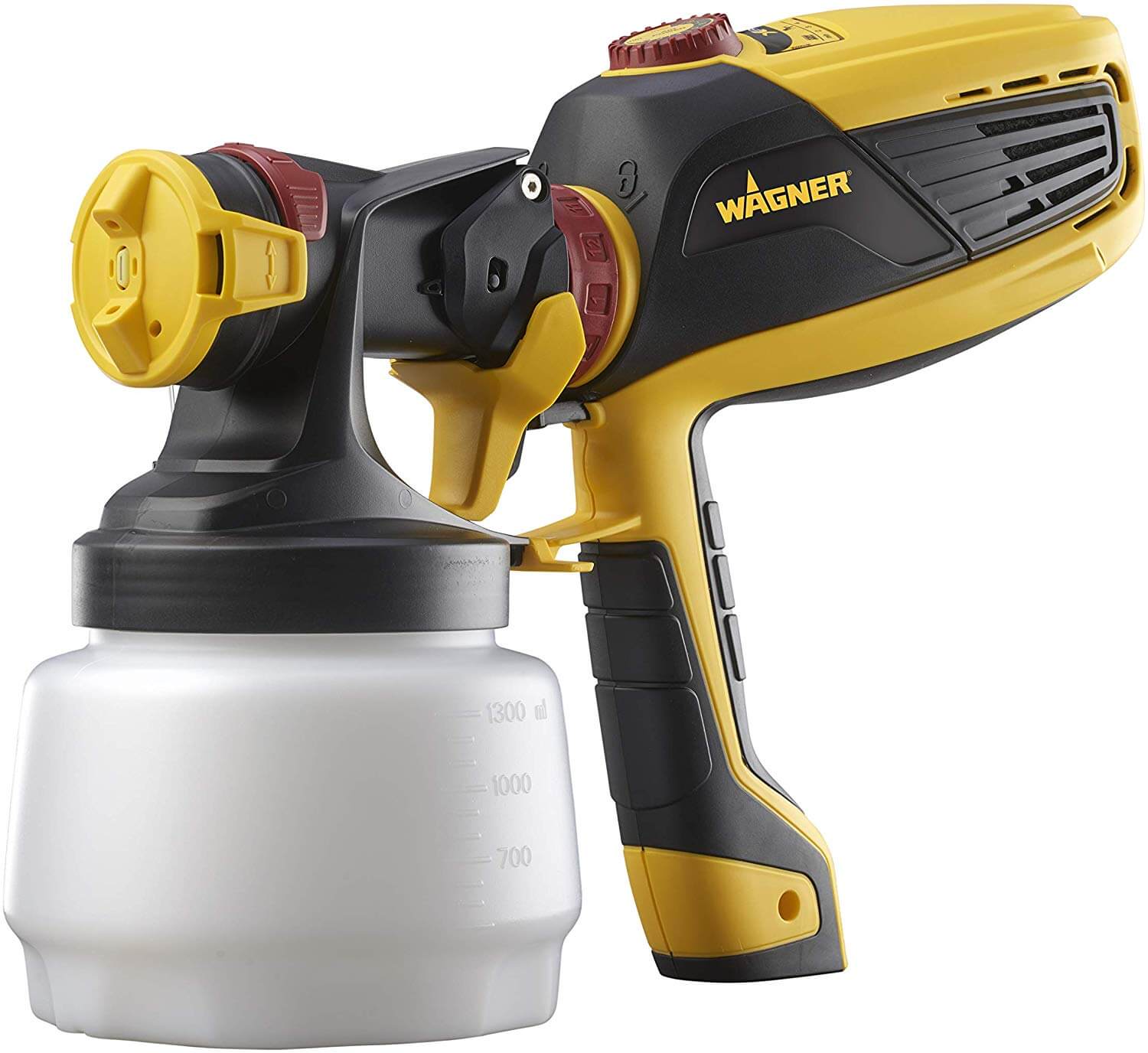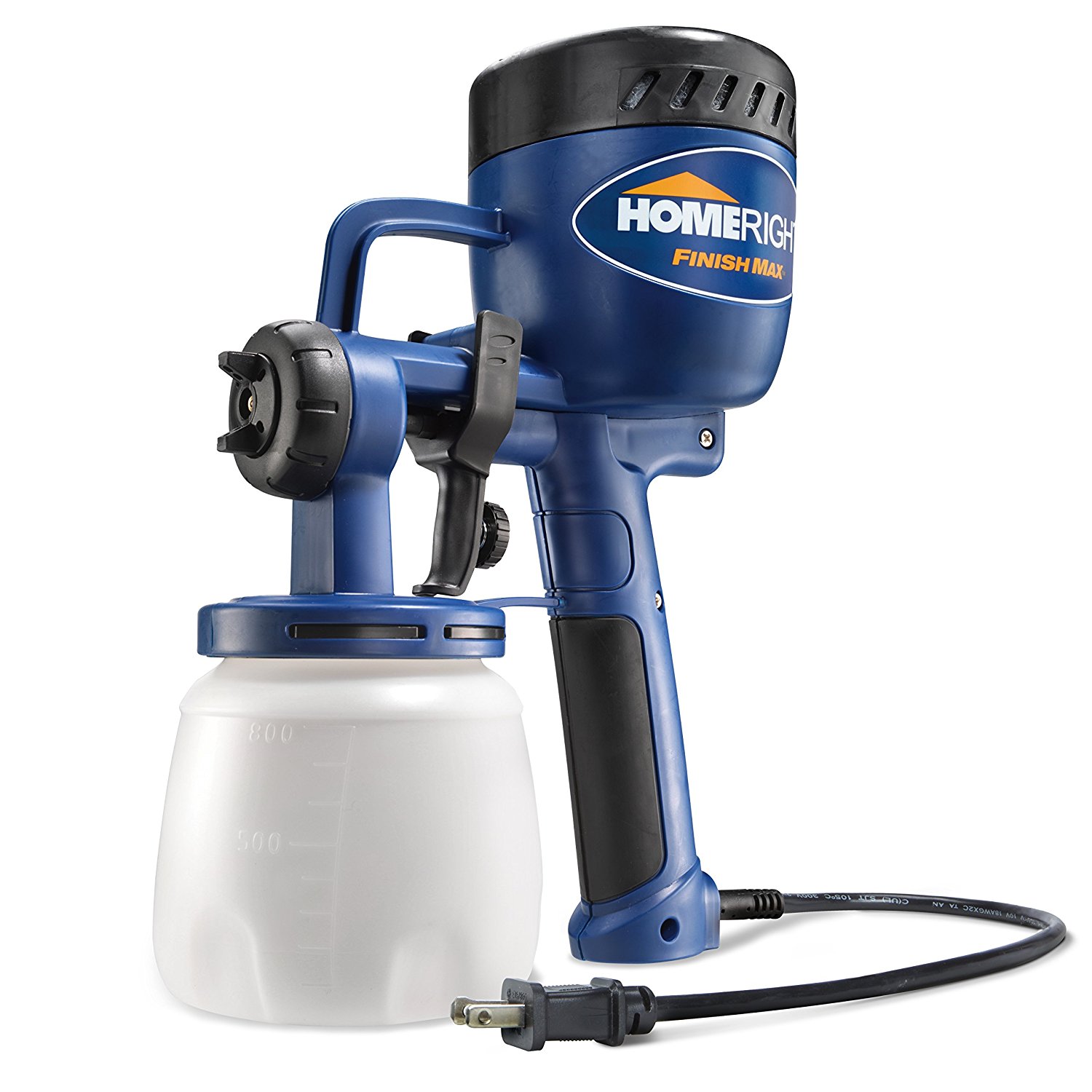Types of Paint Sprayers for Cabinets

Choosing the right paint sprayer for your cabinet project is crucial for achieving a professional-looking finish. Different types of paint sprayers offer varying levels of ease of use, finish quality, and suitability for different project sizes. Understanding the pros and cons of each type will help you make an informed decision.
HVLP Sprayers
HVLP (High Volume, Low Pressure) sprayers are a popular choice for cabinet painting due to their ability to deliver a fine, even finish.
HVLP sprayers work by using a large volume of air at low pressure to atomize the paint, resulting in a smoother and more consistent finish compared to other types.
Advantages of HVLP Sprayers
- Fine Finish: HVLP sprayers are known for producing a smooth, even finish, ideal for cabinet painting.
- Less Overspray: The low pressure used in HVLP sprayers reduces overspray, minimizing the need for masking and cleanup.
- Suitable for Various Paint Types: HVLP sprayers can handle a wide range of paint types, including latex, oil-based, and stains.
Disadvantages of HVLP Sprayers
- Slower Application: HVLP sprayers typically require more time to apply paint compared to airless sprayers.
- Less Powerful: HVLP sprayers may struggle with thick paints or heavy coatings.
- Larger and Bulkier: HVLP sprayers can be larger and bulkier than other types, making them less portable.
Examples of HVLP Sprayers
- Wagner Control Spray Max: This model features a powerful turbine that provides a smooth and even finish. It’s a popular choice for both beginners and experienced users.
- Graco Magnum X5: The Graco Magnum X5 is a high-performance HVLP sprayer with a larger capacity tank, making it suitable for larger projects.
Airless Sprayers, Best paint sprayer for cabinets
Airless sprayers use high pressure to force paint through a small nozzle, creating a fine mist.
They are known for their speed and efficiency, making them suitable for larger projects.
Advantages of Airless Sprayers
- Fast Application: Airless sprayers are significantly faster than HVLP sprayers, ideal for large-scale projects.
- Powerful: Airless sprayers can handle thick paints and heavy coatings, making them suitable for various applications.
- More Portable: Airless sprayers are generally more compact and portable than HVLP sprayers.
Disadvantages of Airless Sprayers
- Less Fine Finish: Airless sprayers can produce a rougher finish compared to HVLP sprayers, especially with thinner paints.
- More Overspray: Airless sprayers tend to generate more overspray than HVLP sprayers, requiring careful masking and cleanup.
- Higher Maintenance: Airless sprayers require regular maintenance, including cleaning and replacing tips.
Examples of Airless Sprayers
- Graco Ultra Max II 390: This model is a popular choice for professional painters, offering a powerful and efficient spray pattern.
- Wagner Flexio 500: The Wagner Flexio 500 is a compact and user-friendly airless sprayer, suitable for both home and professional use.
Air-Assisted Airless Sprayers
Air-assisted airless sprayers combine the power of airless sprayers with the fine finish of HVLP sprayers.
They use a combination of air and pressure to atomize the paint, resulting in a smoother finish with less overspray.
Advantages of Air-Assisted Airless Sprayers
- Fine Finish: Air-assisted airless sprayers deliver a smoother finish compared to standard airless sprayers.
- Less Overspray: The air assistance reduces overspray, minimizing cleanup and waste.
- Versatile: Air-assisted airless sprayers can handle a wide range of paint types and viscosities.
Disadvantages of Air-Assisted Airless Sprayers
- Higher Cost: Air-assisted airless sprayers are generally more expensive than standard airless or HVLP sprayers.
- More Complex: Air-assisted airless sprayers have a more complex design, requiring more maintenance and cleaning.
- Larger and Heavier: Air-assisted airless sprayers can be larger and heavier than standard airless sprayers.
Examples of Air-Assisted Airless Sprayers
- Graco Ultra Max II 495: This model features a powerful air-assisted airless system, delivering a fine finish with minimal overspray.
- Wagner Control Spray Double Action: The Wagner Control Spray Double Action is a user-friendly air-assisted airless sprayer, suitable for both DIY and professional projects.
Factors to Consider When Choosing a Paint Sprayer: Best Paint Sprayer For Cabinets

Choosing the right paint sprayer for your cabinet project is crucial for achieving a professional-looking finish. Several factors influence the decision, ensuring the chosen sprayer aligns with your project needs and budget.
Project Size
The size of your project significantly influences the type of paint sprayer you need. Smaller projects, like refinishing a few cabinet doors, can be handled effectively with a handheld sprayer. Larger projects, such as painting entire kitchens or multiple rooms, benefit from a more powerful and efficient air compressor-driven sprayer.
Budget
Paint sprayers come in a wide range of prices, from budget-friendly handheld models to high-end professional units. Determine your budget upfront to narrow down the options and select a sprayer that provides the best value for your needs.
Desired Finish
The desired finish is a critical consideration when choosing a paint sprayer. If you seek a smooth, even, and professional-looking finish, a higher-quality sprayer with adjustable settings and precise control is recommended. For less demanding applications, a basic handheld sprayer might suffice.
Level of Experience
Your experience with paint sprayers also influences the choice. Beginners may benefit from a user-friendly handheld sprayer with simple controls and easy cleaning. More experienced users can explore advanced models with more features and capabilities.
Nozzle Size, Spray Pattern, and Pressure Settings
The nozzle size, spray pattern, and pressure settings play a vital role in achieving a smooth and even finish.
- Nozzle Size: A smaller nozzle size provides a finer spray pattern, suitable for intricate details and delicate surfaces. Larger nozzles deliver a wider spray pattern, ideal for covering large areas quickly.
- Spray Pattern: Adjustable spray patterns allow you to customize the spray width and shape, ensuring even coverage on different surfaces.
- Pressure Settings: The pressure setting determines the amount of paint applied. Higher pressure results in a thicker coat, while lower pressure provides a finer finish.
Features for Enhanced User Experience
Certain features enhance the user experience and make the painting process more efficient.
- Adjustable Spray Patterns: Allow you to customize the spray width and shape for different surfaces and applications.
- Variable Speed Control: Provides precise control over the paint flow rate, allowing you to adjust the paint application based on the surface and desired finish.
- Cleaning Ease: Easy-to-clean sprayers save time and effort, reducing the hassle of cleaning after use. Look for sprayers with detachable parts and quick-release mechanisms.
Tips and Techniques for Using a Paint Sprayer on Cabinets

Best paint sprayer for cabinets – Achieving a professional-looking finish on your cabinets with a paint sprayer requires meticulous preparation and proper technique. This section will guide you through the steps involved in preparing your cabinets for painting and provide essential tips for using a paint sprayer effectively.
Preparing Cabinets for Painting
Thorough preparation is crucial for a successful paint job. The following steps will ensure your cabinets are ready for a smooth and even coat of paint.
- Clean the Cabinets: Begin by cleaning your cabinets thoroughly to remove dirt, grease, and any existing coatings. Use a mild detergent and warm water, applying it with a soft cloth or sponge. Rinse the cabinets thoroughly and allow them to dry completely.
- Sand the Cabinets: Sanding helps to create a smooth surface for the paint to adhere to and ensures a consistent finish. Use a fine-grit sandpaper (120-180 grit) to lightly sand the surfaces, paying particular attention to any rough spots or imperfections. Wipe away the sanding dust with a tack cloth to remove any residue.
- Mask and Protect: Protect areas that you don’t want to paint with painter’s tape and drop cloths. Use tape to mask off areas like trim, hardware, and adjacent walls. Cover floors and surrounding surfaces with drop cloths to prevent overspray.
Using a Paint Sprayer for Cabinets
Using a paint sprayer can significantly expedite the painting process and deliver a professional finish. Here are some best practices to follow for optimal results:
- Choose the Right Paint: The type of paint you choose will affect the sprayer settings and the final finish. Latex paints are generally recommended for cabinets as they offer good adhesion, durability, and easy cleanup. Oil-based paints provide a harder, more durable finish, but they require more preparation and cleanup.
- Thin the Paint: Most paint sprayers require thinning the paint for optimal atomization and application. Follow the manufacturer’s instructions for the recommended thinning ratio for your chosen paint and sprayer. Too much thinning can result in a thin coat, while too little thinning can lead to clogging.
- Practice Before Applying: Before spraying your cabinets, practice on a scrap piece of wood to get a feel for the sprayer and adjust the settings for desired coverage and finish. This will help you avoid mistakes on your actual project.
- Hold the Sprayer Correctly: Hold the sprayer approximately 6-8 inches from the surface and maintain a consistent distance throughout the application. Move the sprayer in a smooth, even motion, overlapping each pass by about 50% to ensure even coverage.
- Control Overspray: Overspray can be a common problem with paint sprayers, so it’s important to minimize it. Use a slow, even motion and avoid spraying too close to the surface. Also, make sure to mask off areas that you don’t want to paint.
- Apply Multiple Thin Coats: It’s generally better to apply multiple thin coats of paint rather than one thick coat. This helps to prevent runs and drips and ensures a smoother, more even finish. Allow each coat to dry completely before applying the next.
Optimal Paint Sprayer Settings for Different Cabinet Paints
| Paint Type | Pressure (PSI) | Nozzle Size | Spray Pattern |
|---|---|---|---|
| Latex Paint | 30-40 | 0.023-0.033 | Fan |
| Oil-Based Paint | 40-50 | 0.028-0.040 | Fan |
Memilih cat semprot terbaik untuk kabinet memang penting, kok. Kalo ado rancangan mau cat kabinet warna biru, kalian bisa liat-liat dulu ide-ide desainnya di sini. Nah, setelah dapet inspirasi, baru deh pilih cat semprot yang cocok buat ngecat kabinet.
Kalo mau hasilnya bagus, pakai cat semprot yang berkualitas tinggi, ya!
Memilih cat sprayer terbaik untuk kabinet memang penting, tapi jangan lupakan persiapannya! Sebelum memulai, pastikan pintu kabinetmu sudah siap dengan baik. Kamu bisa menggunakan tape ease cabinet doors untuk memastikan hasil akhir yang rapi dan mulus. Dengan persiapan yang tepat, cat sprayer terbaikmu akan bekerja lebih optimal dan memberikan hasil yang memuaskan.
